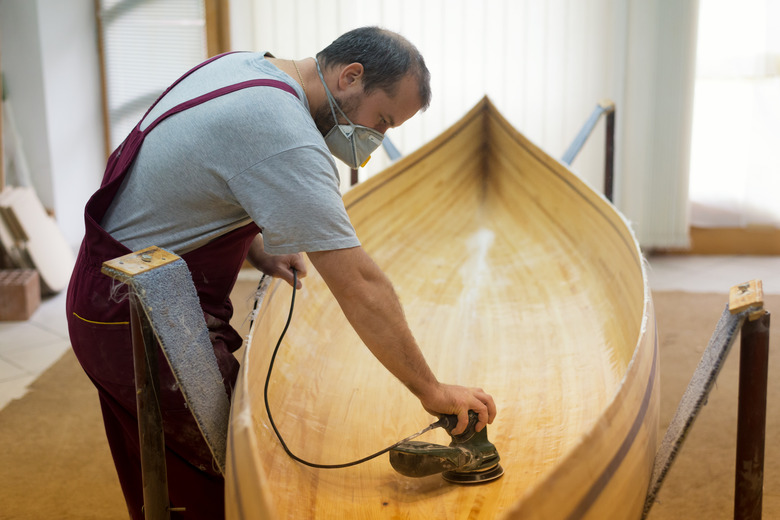How To Sand Spar Urethane
If you love to take your sailboat out into the morning breeze, you already know that a spar is a part of the sail assembly. Spar urethane is named after the sailboat spar because this waterproof wood finish was initially made for use on boats. These days, a spar urethane finish is applied to many different wood features, interior and exterior. Sanding plays an important role in applying urethane. When you want to apply several coats of urethane, you need to sand between each to help the next coat stick. You can also sand out brush strokes and bubbles.
Spar Urethane Finish
Spar Urethane Finish
Spar urethane finish used to be termed "marine spar urethane" because it was used extensively on boats. The spar urethane application was perfect for boat use because it makes wood waterproof while providing a finish that is both durable and perfectly clear. Contractors and consumers doing home repairs began using the product for other wood in and around the house, such as doors, window trim, counter tops and wooden garden furniture.
Although the applied product provides an easy-care finish, getting a spar urethane finish applied nicely is not that easy. Given the thickness of the urethane, it's rather like trying to apply a thin, even layer of corn syrup. That's where sanding comes in. You must sand between coats to create a gritty surface for the next layer to cling to. But you can also use sanding to take out the blemishes in all but the top coat.
Spar Urethane Application
Spar Urethane Application
It takes the right equipment and quite a bit of know-how to spread a spar urethane application without leaving brush strokes, bubbles or other defects. Experts suggest that you can make your urethane easier to work with by thinning it out by 10 to 20 percent with mineral spirits. When you thin spar urethane finish, it self-levels better and that helps avoid brush marks.
Sanding Spar Urethane
Sanding Spar Urethane
When you sand polyurethane between coats, you don't want the lower coat surface to be smooth when you finish. The idea is to remove dust bumps and create a rough surface a new coat can stick to. This is also the time to remove brush marks and blemishes.
Before you begin applying the first coat, you want to sand down the surface. It needs to be free of paint, wax, grease and old finishes. Once it is clean and the surface is uniform, wipe it with a damp cloth to remove dust. Then, apply a thin coat of spar urethane using a good quality brush with a natural bristle. Make sure the layer seals any edges, end grains and open joints.
Let the layer dry thoroughly, at least four hours. Then, sand the spare urethane application. Use a very fine sandpaper like 220-grit sandpaper. Wipe off dust and apply a second coat. Three coats are recommended if the wood is for the exterior or if was previously unfinished. Do not sand after the final coat, but allow it to dry for 24 hours before you use it.
